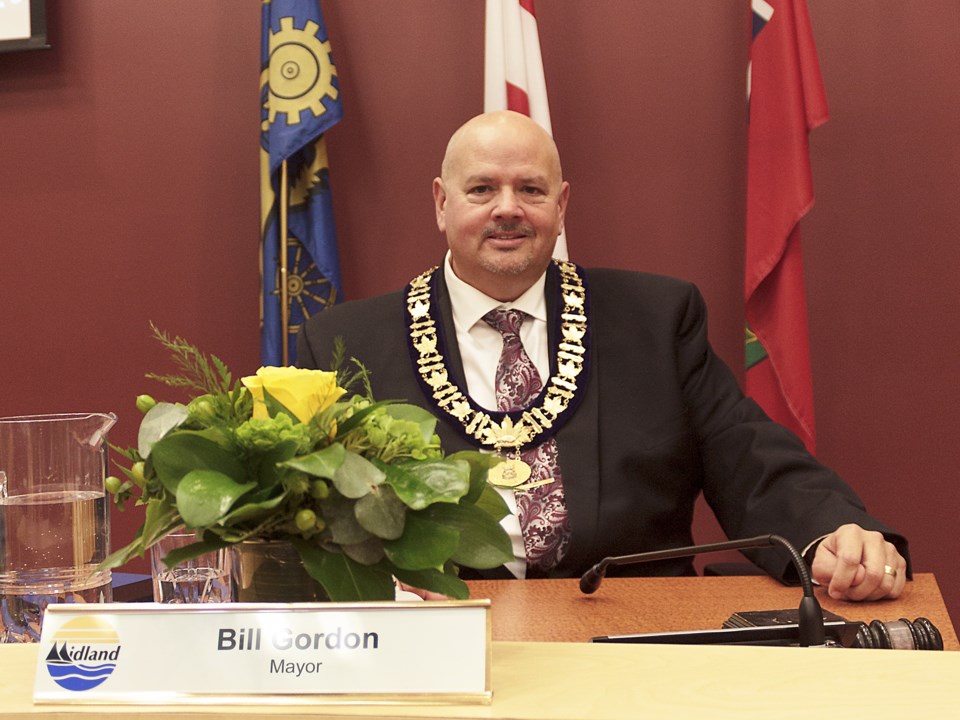After hearing from 'a godfather' of walkable cities, to speak about bike-lane safety on Yonge Street led to a reversal on a heated stance among the community.
Members of the Midland active transportation advisory committee presented an active transportation perspective for the 2025 Yonge Street reconstruction project, with a focus on healthy living and safety issues at a recent committee of the whole meeting.
The structure of a completed Yonge Street raised public interest in March when a staff report cited an expected base cost of $8.5 million. Discussion arose regarding repainting the road lanes to accommodate cyclists, or including safety bollards as a means of segregation, but those costs could climb to the $11 million and above range.
Comments at that time from Mayor Bill Gordon were for staff to go back to cover all options in the report, including a status-quo return to a four-lane repainting. The following month, council heard further input from the community including a resident deputation asking for bike lanes to be maintained.
The active transportation committee deputation addressed bike lanes within their deputation, provided by chair Herb van den Dool and vice chair Mary Brodeur. van den Dool brought his perspective as a parent, while Brodeur shared her views as a public health nurse with the Simcoe Muskoka District Health Unit.
“Sprawling car-dependent neighbourhoods contribute to poor health,” stated Brodeur. “Communities that plan for cars will get more cars, communities that plan for pedestrians and cyclists will get more people walking and cycling.”
Localized slides were shown, including comments directly from parents and Mundy’s Bay Public School located between Sixth and Seventh Streets, as well as a note from the general manager of the Villa Care Centre across from the school that praised existing bike lanes for accessible scooter usage.
“There's 453 students that attend Mundy's Bay Public School,” said Brodeur, claiming that only one-fifth were cycling or walking the route. “If parents don't feel their children are safe walking or wheeling for the school journey they will choose to drive.”
Various statistics and studies were cited throughout the deputation with van den Dool stating that physically separated bike lanes were the safest option, citing a route infrastructure and cycling injury risk study from 2012.
“A separated bike lane with curbs or bollards has the lowest injury risk compared to any other routes for cycling,” said van den Dool, “and no separated bike lanes equals six times greater risk of injury compared to the physically separated bike lanes.
“For the posted speed limit on Yonge… and daily traffic volume, the Ontario Traffic Manual requires a physically separated bikeway,” van den Dool added. “Bollards are a good way of providing that separation.”
One slide containing a pie chart taken from a 2022 traffic monitoring for Yonge Street noted excess speeds through the 40 kilometre per hour school zone; however, the report stated that during school hours between 77 to 84 per cent of vehicles travelled within the accepted speed limit of up to 10 kilometres per hour over the posted limit.
Upon conclusion, the recommendation by the active transportation advisory committee was for the town to keep the safer road diet with physically separated bike lanes as per the staff recommendations in the report.
Gordon responded first by thanking the committee for its rare appearance, before continuing into his experience at last month’s Ontario Good Roads Association conference with keynote speaker, urban planner Jeff Speck.
“I sat there with my usual skepticism that I always apply to new information,” related Gordon, “and the evidence that he (Speck) presented was absolutely undeniable.”
According to Gordon, the 90-minute keynote inspired him to immediately purchase and digest Speck’s tactical governance books on walkable cities – allowing Gordon to also briefly chat with Speck – where its content made more sense than the opposing resident feedback which was more emotion-based.
“Really, he did change my heart and mind on this,” said Gordon. “It makes sense to me that our complete streets approach that's currently in our multimodal master plan is the right way to go, so now it's just about juxtaposing that with the cost of the rate payer and what the recommendations are from our team.
“Based on the feedback I'm getting from residents,” Gordon shared, “with your presentation, and by talking to someone who has zero skin in the game who arguably was the godfather of complete streets and walkability – and it's undeniable evidence.”
Council thanked the committee for their delegation, and received the presentation as information. Municipal staff are expected to return with the Yonge Street traffic report with updated road diet options for a future meeting of council.
Council meetings are held every third Wednesday, and can be viewed on Rogers TV cable channel 53 when available, or through the livestream on the Rogers TV website. Archives of council meetings are available through Rogers TV and on the Town of Midland’s YouTube channel.



